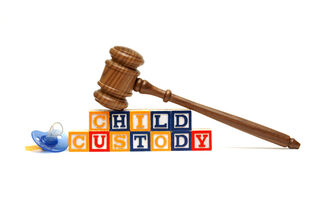Personality
Misunderstanding High-Conflict Personalities in Family Court
Part 2: Three theories of a case must be considered.
Posted March 31, 2021 Reviewed by Pam Dailey
Key points
- In divorce and custody disputes, some professionals are misled by those with personality disorders.
- The intensity of blame by those with personality disorders can make it seem that what they say is true.
- The way to protect against being misled is to consider all three theories of the case.
- Parents, friends, and family need to understand that bias exists in family court cases.
As explained in Part 1 of this series, people with Cluster B personality disorders are frequently domineering, vindictive, and intrusive with family members, including those they are divorcing. This means, in some family law cases, that there has been abuse—physical, sexual, verbal, financial, emotional—or alienation (where a child resists seeing a parent and favors the other). In some cases, there are also deceptions, false allegations, and unnecessary blaming.

After all, as well as being abusive, some people with personality disorders are persuasive blamers, as I explained in my book Splitting: Protecting Yourself While Divorcing Someone with Borderline or Narcissistic Personality Disorder:
Persuasive blamers focus the blame for their problems on one specific person: a target of blame. Targets of blame are usually:
- Intimate partners
- People in authority, such as doctors, lawyers, clergy, police officers, managers, and government employees
In divorce, the target is most commonly the divorcing partner. But sometimes it becomes one of the children, a new partner (or perceived new partner), the other partner’s lawyer, or even the judge. Blamers’ cognitive distortions can be extreme and lead to extreme behavior. (Eddy, 2011, 51)
This means that in some cases the family law professionals (lawyers, judges, mediators, counselors, evaluators) get the case backwards. Parents and professionals involved in custody and other parenting disputes need to understand this and deal with it.
Three Theories of the High Conflict Case
In order to understand what is really going on in a high-conflict case and determine who is acting badly, family law professionals must consider all possibilities. When person A says Person B is acting badly (abuse, alienation, etc.), three theories must always be considered:
1. It’s true: Person B is acting badly.
2. It’s not true: Person B is not acting badly at all and Person A is acting badly.
3. Both are acting badly.
Unfortunately, all three of these situations look the same on the surface, so that if someone has a bias towards one of these theories, they will assume that it is true. Many family law cases start out backwards because this bias is not understood. “Confirmation bias” is the psychological term for having only one theory of a problem, because you will tend to confirm that theory (or "hypothesis") in your own mind, as follows:
You focus on the information that seems to fit.
You overlook information that contradicts it.
You misinterpret vague information to make it fit your theory.
You influence others to give you information that fits your theory.
For example, there are divorce cases in which a mother with a histrionic or borderline personality disorder accuses a father of child abuse. She feels that he is abusing the child because the child is sad after a weekend with the father (a common occurrence that many parents handle routinely). But if she appears highly distraught, her emotions may prompt the sympathy of a lawyer who becomes persuaded to aggressively “protect” the child from this father. Then the lawyer may aggressively argue to the mediator or judge in the case that the father can’t be trusted with the child based on some vague facts that are all interpreted negatively. Of course, this triggers anger in the father, which then becomes further confirmation of the abuse theory, and such a case can spiral downward for weeks, months, or even years.
For another example, there are divorce cases in which a mother has been accused by a father with a narcissistic or antisocial personality disorder of alienating the child and blocking the father’s parenting relationship with the child when she has not done so. The accusation may be totally made up or an exaggeration based on some minor information which has been blown out of proportion. Such an allegation can be very persuasive with a lawyer who views this as a case of a father who has been “wronged” by a controlling mother. The lawyer may then persuade a mediator or a judge that this mother is damaging the father-child relationship. Of course, this triggers anger in the mother, which then becomes further confirmation of her efforts to alienate the child, and such a case can also go on a downward spiral.
But most commonly, judges, mediators, some lawyers,and some therapists have been trained for years to think that both parents are probably contributing to the problems fairly equally. Therefore, they may disregard the need for real protections against abuse or false allegations, and simply tell the parents to calm down and move on. Many parents do not realize that there are these unwritten (and often unconscious) presumptions that can affect the outcome of a child custody case.
Conclusion
To make accurate assessments and decisions, family law professionals must seriously consider all three of these theories:
- The possibility that allegations of abuse and alienation are true, and they must look under the surface at the facts in an unbiased manner.
- The possibility that they are not true, and they must look under the surface to see if there are facts to support that theory as well.
- The possibility that both parents are, in fact, acting badly.
The key is to seriously consider all three of these theories carefully, so that one does not fall into confirmation bias and misjudge a case.
Family members and friends should also consider these three possibilities and be careful not to make assumptions that one person or the other is being abusive or making false statements. It is often family members and friends, who may be ill informed, who encourage those with vulnerable personalities to fight against the other person when it may not be appropriate, Instead, they should be encouraged to explain to professionals which of the three theories they believe applies in their case and why the other two do not. Providing factual information is much more helpful than emotional arguments. One way to do this is explained in Part 3 of this series.
Part 3 will focus on Presenting Your Case When a Personality Disorder is Involved.
References
Eddy, B. Splitting: Protecting Yourself While Divorcing Someone with Borderline or Narcissistic Personality Disorder (Oakland, CA: New Harbinger, 2011).




